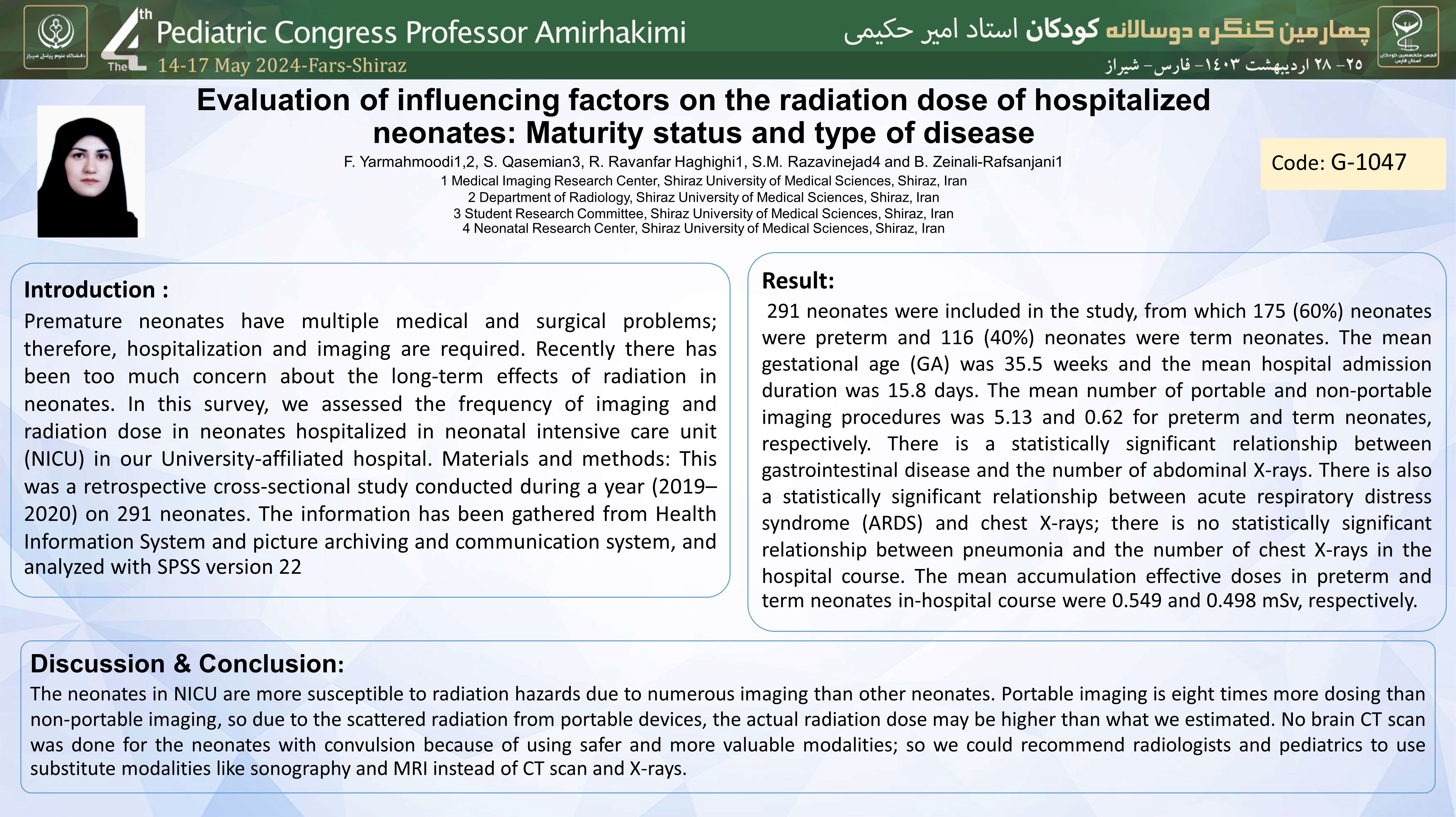بررسی عوامل موثر بر میزان تابش نوزادان بستری : وضعیت بلوغ و نوع بیماری
کد: G-1047
نویسندگان: F. Yarmahmoodi, S. Qasemian, R. Ravanfar Haghighi, S.M. Razavinejad ℗, B. Zeinali-Rafsanjani ©
زمان بندی: زمان بندی نشده!
دانلود: دانلود پوستر
خلاصه مقاله:
خلاصه مقاله
Abstract Context: Premature neonates have multiple medical and surgical problems; therefore, hospitalization and imaging are required. Recently there has been too much concern about the long-term effects of radiation in neonates. In this survey, we assessed the frequency of imaging and radiation dose in neonates hospitalized in neonatal intensive care unit (NICU) in our University-affiliated hospital. Materials and methods: This was a retrospective cross-sectional study conducted during a year (2019–2020) on 291 neonates. The information has been gathered from Health Information System and picture archiving and communication system, and analyzed with SPSS version 22. Results: 291 neonates were included in the study, from which 175 (60%) neonates were preterm and 116 (40%) neonates were term neonates. The mean gestational age (GA) was 35.5 weeks and the mean hospital admission duration was 15.8 days. The mean number of portable and non-portable imaging procedures was 5.13 and 0.62 for preterm and term neonates, respectively. There is a statistically significant relationship between gastrointestinal disease and the number of abdominal X-rays. There is also a statistically significant relationship between acute respiratory distress syndrome (ARDS) and chest X-rays; there is no statistically significant relationship between pneumonia and the number of chest X-rays in the hospital course. The mean accumulation effective doses in preterm and term neonates in-hospital course were 0.549 and 0.498 mSv, respectively. Discussion: The neonates in NICU are more susceptible to radiation hazards due to numerous imaging than other neonates. Portable imaging is eight times more dosing than non-portable imaging, so due to the scattered radiation from portable devices, the actual radiation dose may be higher than what we estimated. No brain CT scan was done for the neonates with convulsion because of using safer and more valuable modalities; so we could recommend radiologists and pediatrics to use substitute modalities like sonography and MRI instead of CT scan and X-rays. Key words: radiation dose / premature neonates / medical imaging / portable imaging
